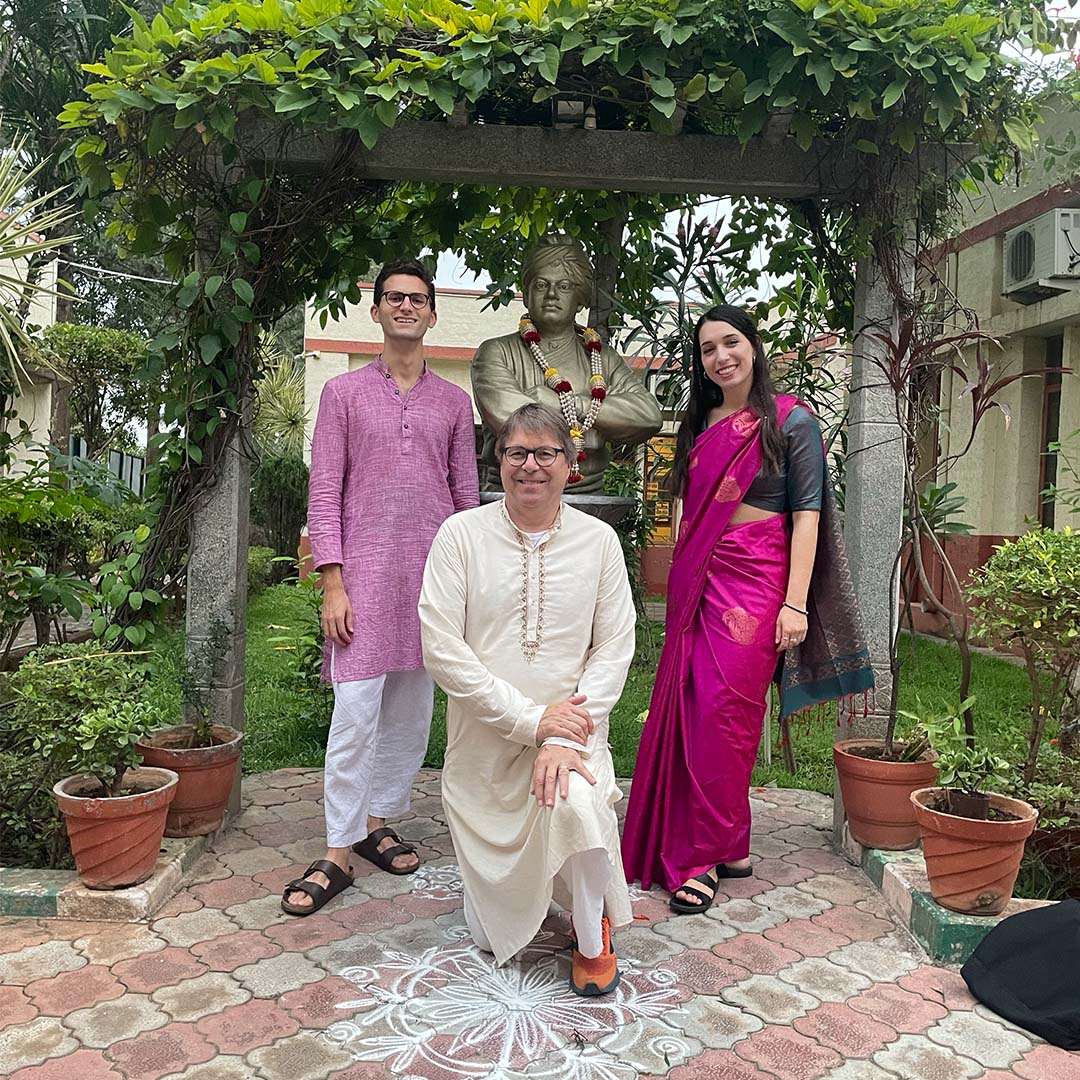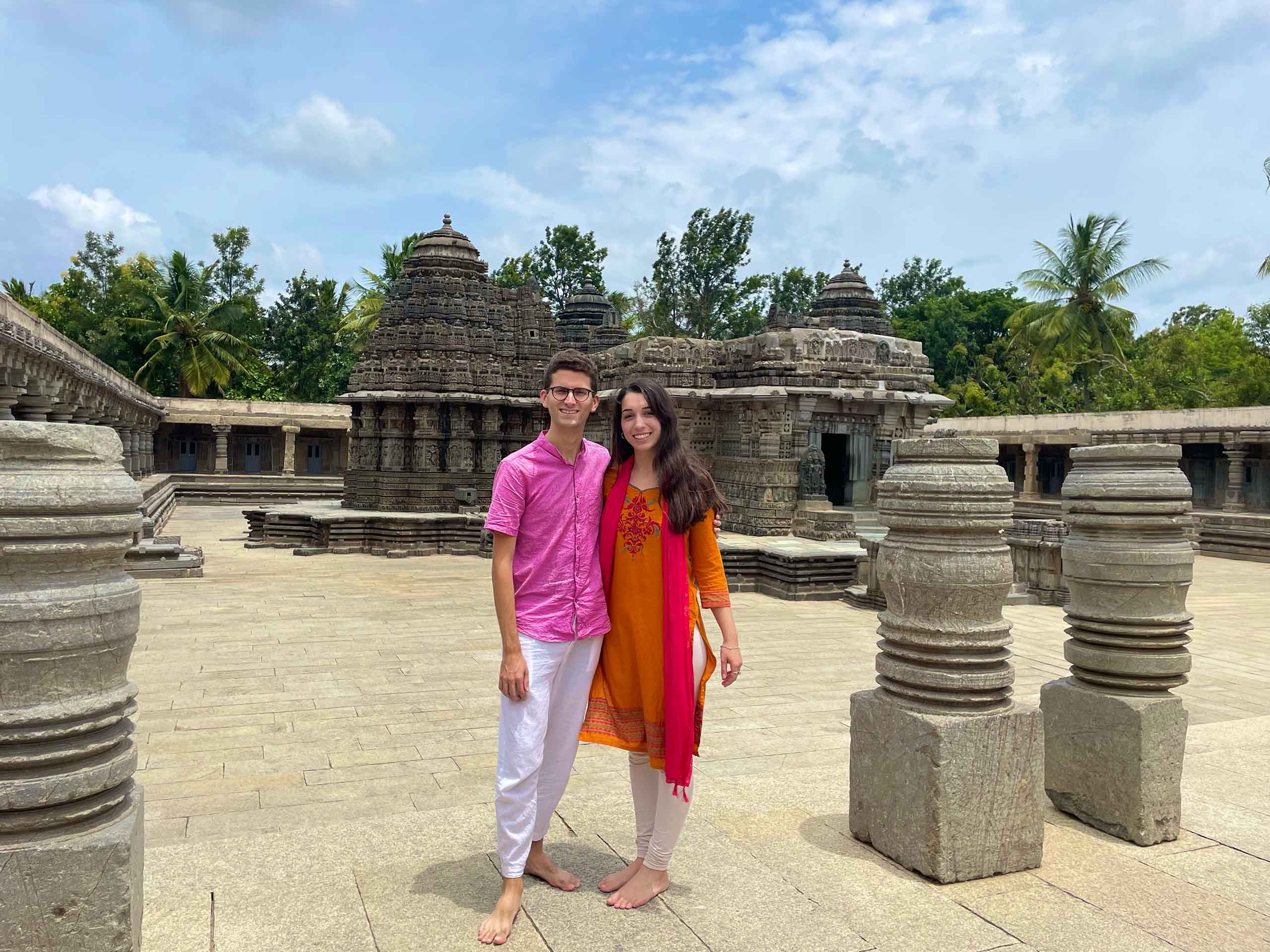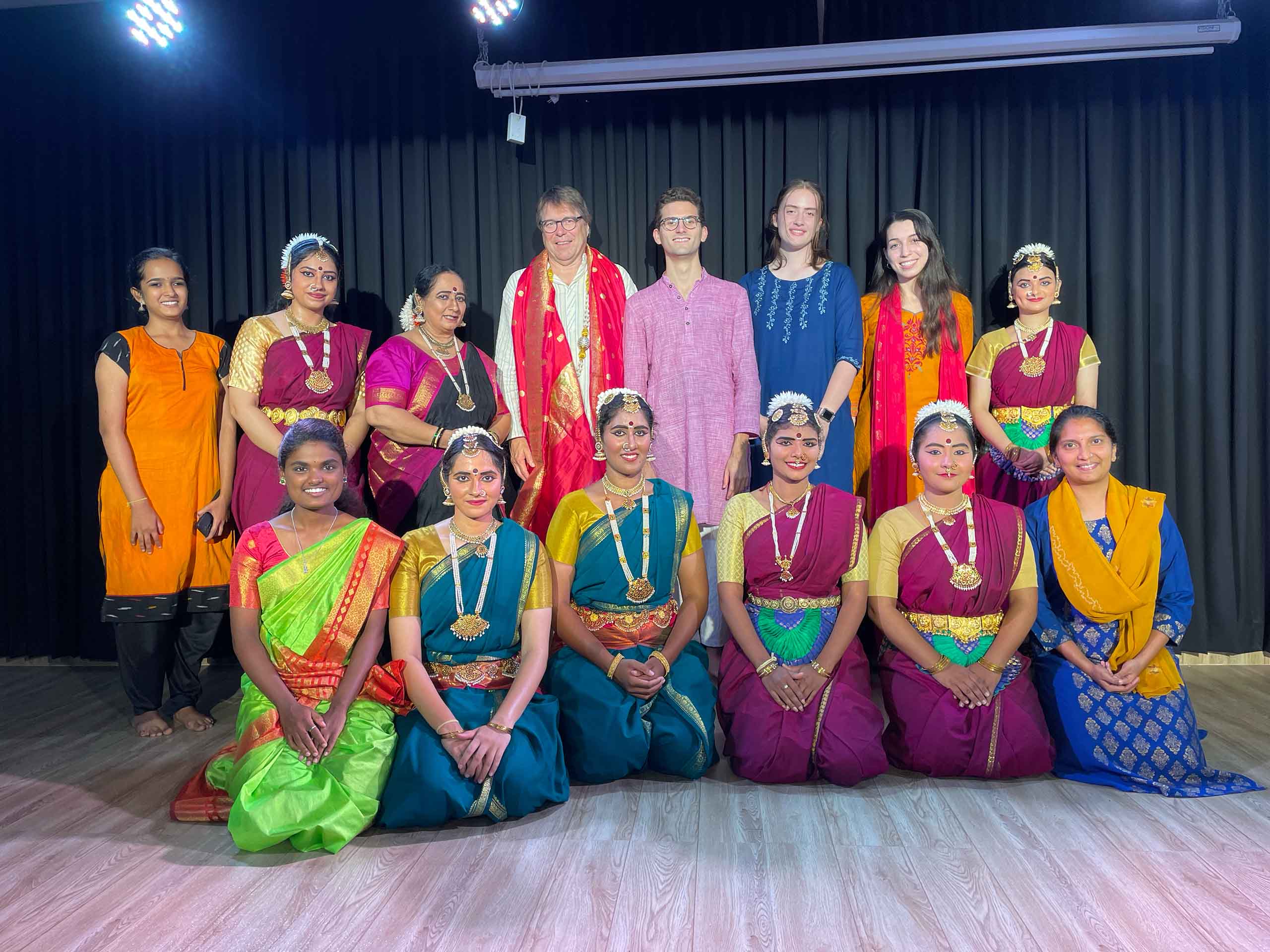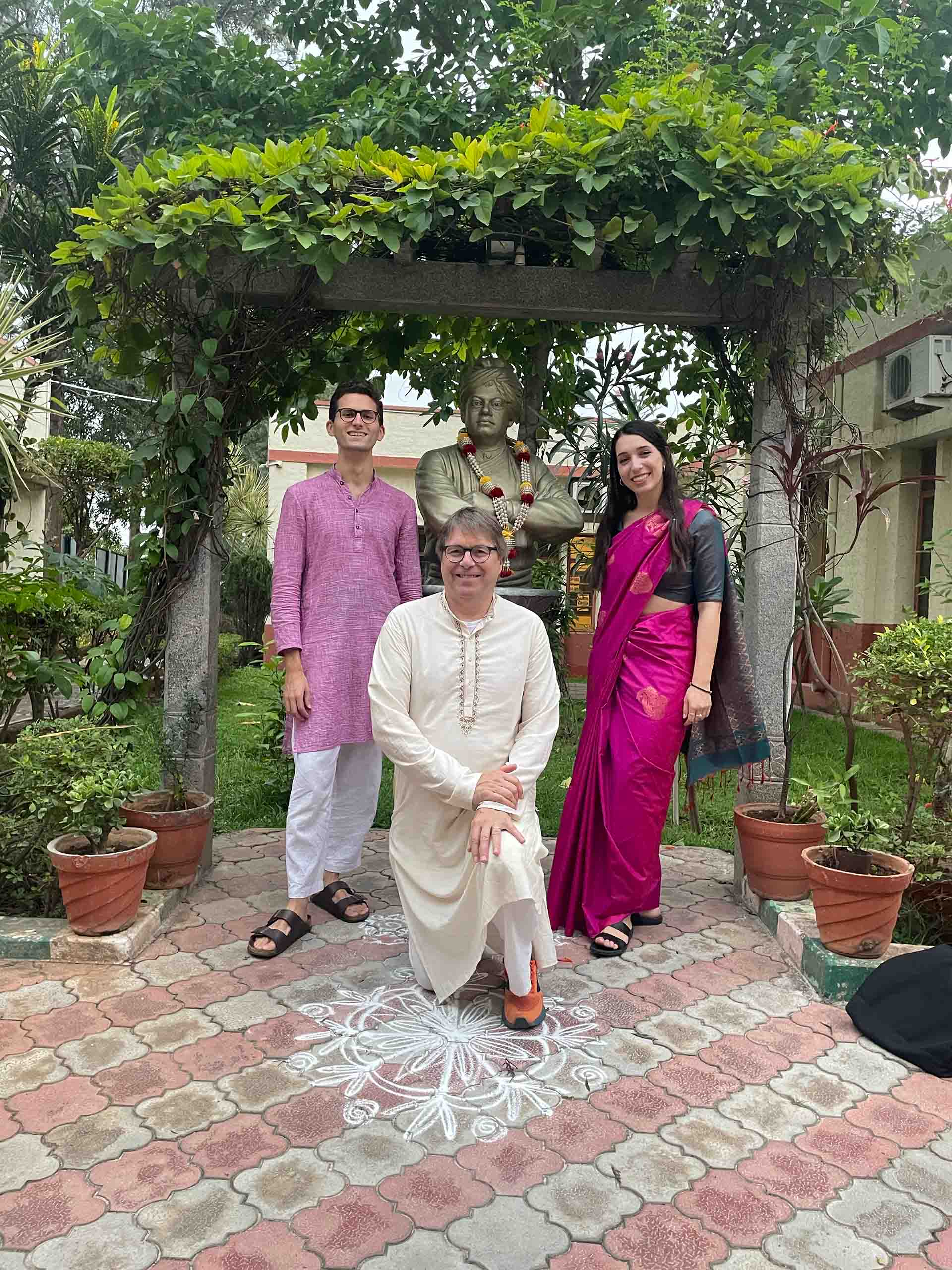During the summer of 2023, a group of SMTD students traveled with Professor Stephen Rush (performing arts technology) to Mysore, India. They spent a month there, immersing themselves in the culture and studying Carnatic music, a form of classical music originating in southern India. “This particular group reminded me of the importance of the program,” stated Rush, “how it affects their lives deeply – how much an immersive experience can change perspectives on ‘otherness,’ as well as the deeply important self-discovery that comes from going to a place that is quite different than where ‘we’ come from.”
Below, Annabella Paolucci (BM ’25, violin and performing arts technology) shares her reflections on the trip.
Whenever anyone asks me how my study abroad program in India was, I’m always surprised by my inability to respond. I try my best to find words worthy of describing my experience, but I fail each time, because I’m not sure if they even exist. There are no words that can describe my feeling when I walked out of the Bengaluru airport for the first time, realizing I had finally made it to India; my feeling while making tea with my guru and learning about not only the discipline and beauty of Carnatic violin, but what it truly means to make music; or my feeling riding through the bumpy, colorful, and lively streets of Mysore in a rickshaw.
Being the first India summer program in session since the COVID pandemic, our group was smaller than usual, so we had the opportunity to grow very close, to share and learn from each other, and to easily travel to amazing monuments such as the Mysore palace, breathtaking temples, bustling markets, an elephant sanctuary, and so much more. After staying at a hotel near the airport upon arrival and waking up to some delicious masala dosas and filter coffees, we traveled to the Swami Vivekananda Youth Movement hostel, where we would be staying for the rest of the program. During our orientation, we were greeted with a traditional ceremony; we were given jasmine flower necklaces, vermilion powder on our foreheads, sugar crystals, and lots of love.
Our typical day began with 6 a.m. yoga, followed by a private lesson with our music gurus; personal time to practice, meditate, and journal; and a Carnatic music concert in the evening. The concerts were always a highlight of the day – how could they not be? We had the honor of listening to some of India’s most legendary musicians in person. As the crowd followed along with the tala, or rhythmic cycle, and shook their heads in satisfaction after hearing a gut-wrenching, passionate melody sung, I could clearly see how deeply the music reached into the souls of each audience member. Additionally, I witnessed the deep respect the audience had for the musicians, touching their feet to express that respect as they walked into the venue. I’m disappointed to say that before applying to this program, I had only heard Carnatic music a couple of times, and I now realize it is an art form I can no longer live without.
Even after 15 private lessons, dozens of concerts, and hours of private practice, music was only a portion of all the transformative knowledge I took away from this experience. While learning this difficult and rewarding music, I simultaneously had the chance to discover who I am, what my purpose is, and why I exist. I had frequently asked myself these questions before, but I never had the chance to really attempt to answer them. We also attended thought-provoking lectures on yoga, the Bhagavad Gita, the ancient Sanskrit epic Ramayana, and more, that provoked many important conversations about our lives and how we live them.
Throughout the month, there were many emotionally difficult moments as well, as we learned more about social structures and injustices in India. In other lectures, we discussed the caste system, gender, development, and colorism in India, exploring these topics further through exposure and observations in our day-to-day lives. Engaging in important conversations about these topics with locals was critical to understanding more about the country we were learning from. The remnants of British rule were evident around every corner we turned. We recognized that each of us in the group benefited from white privilege, which gave us advantages that other foreigners most definitely would not have had. We listened and learned, and we were inspired by the discussions of reform and justice and the many social movements that are taking place now to bring equality to all of India.
Returning from Mysore, India, was harder than I could have ever imagined. No word exists that can describe how it felt saying goodbye to my guru and friends, or how it felt to look around the lively, colorful streets for the last time. I was greeted with the same heat wave at the Miami airport I always fly into, took the same route back to my house, and returned to my life exactly as I left it. But nothing felt the same. I was not the same. Because after spending a month immersed in the ideologies, art, music, and practices of India that we experienced in Mysore, I found it impossible to return home as the same person that boarded that lengthy flight to Bengaluru. I know that this trip will continue to shape me for the rest of my life, and I will forever be grateful to Professor Rush and everyone who has made this program possible.




